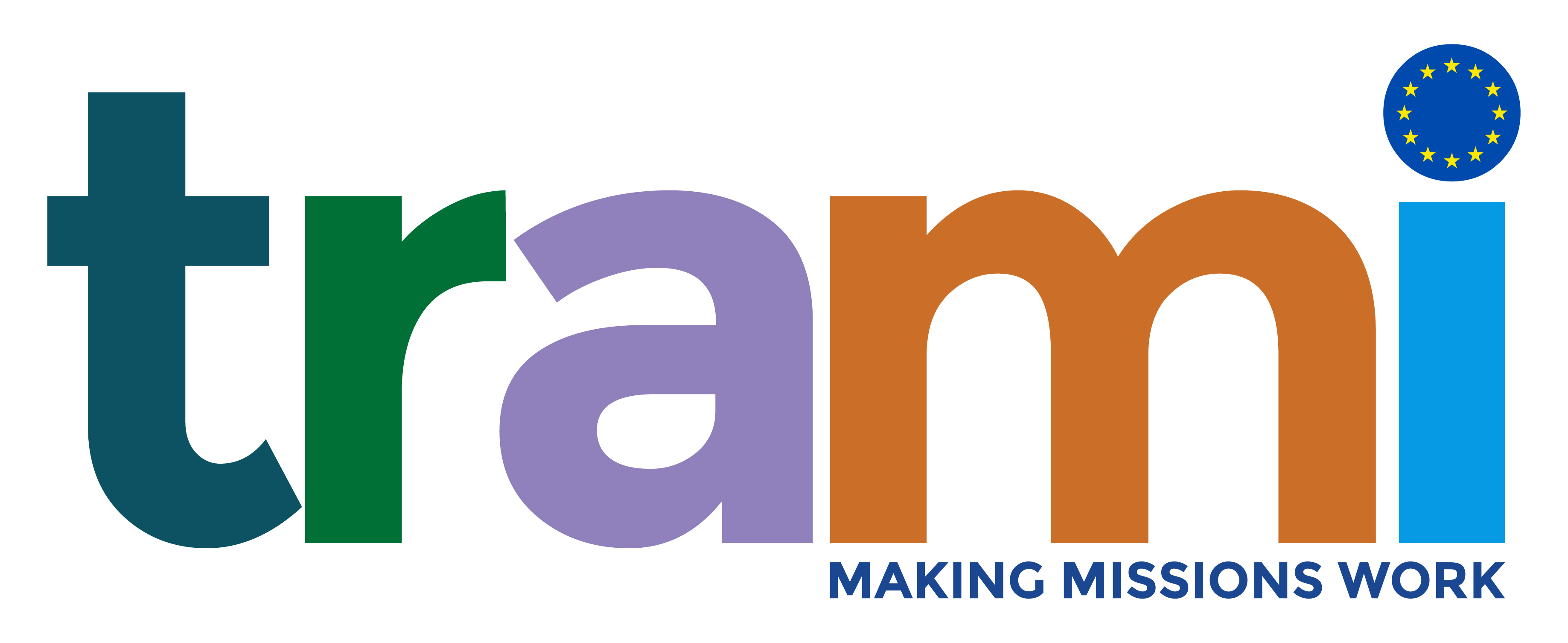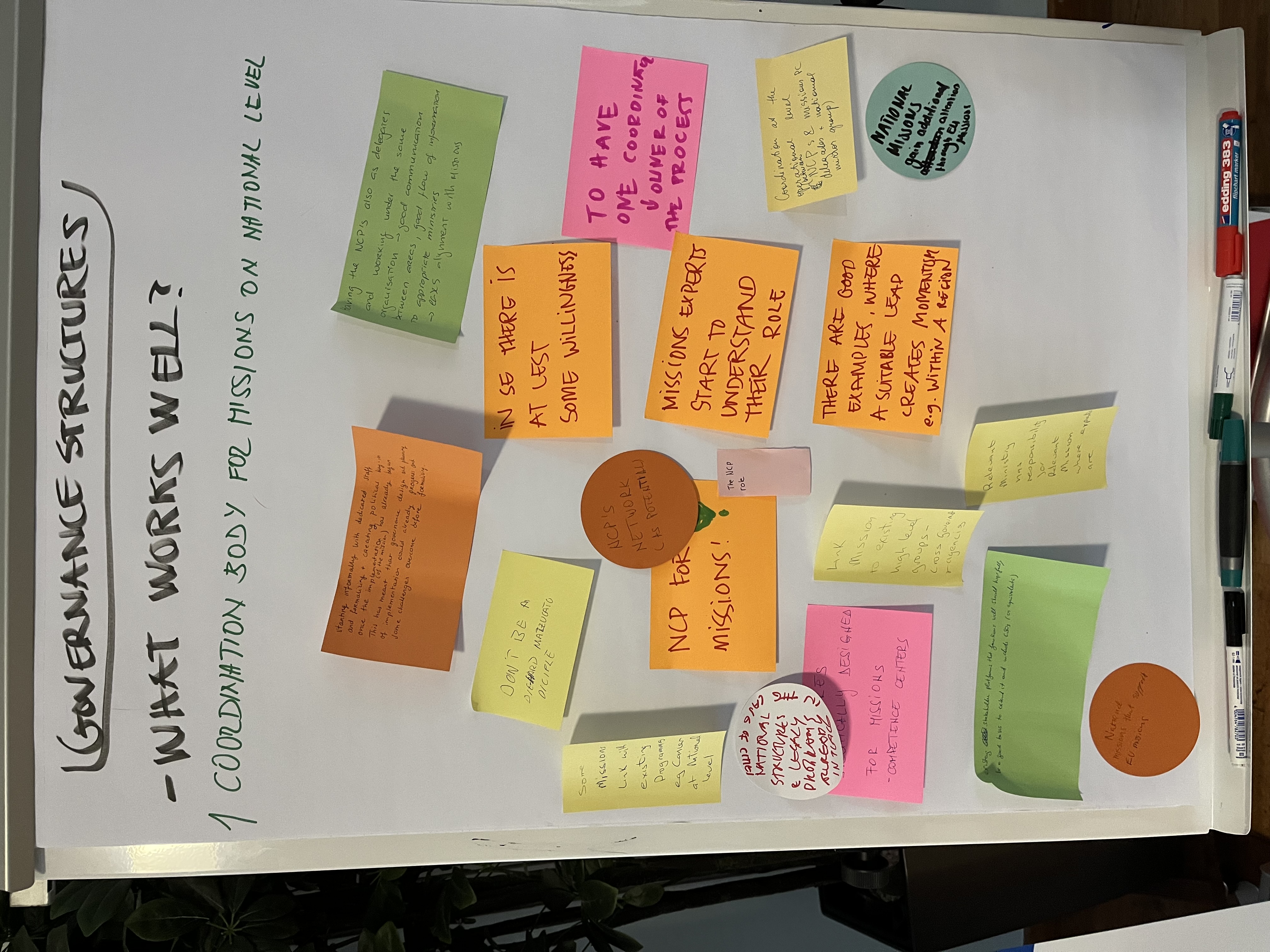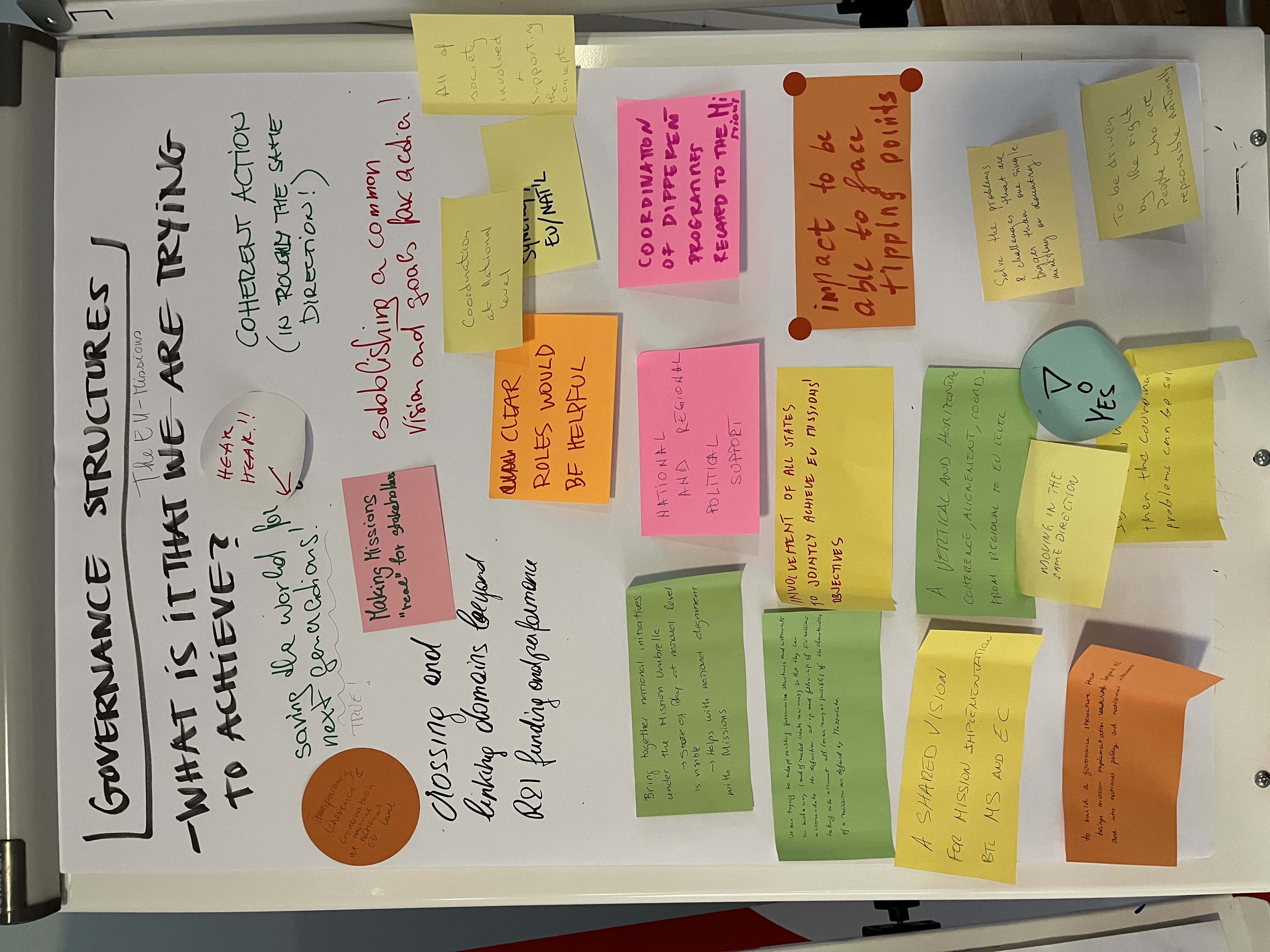Report on the third Mutual Learning Event with TRAMI partners
How can national governance structures and instruments support the implementation of EU Missions?
ORGANISERS: TRAMI
VENUE: FFG premises, Haus der Forschung, Sensengasse 1, 11090 Vienna
DATE: 26 January 2023, 13h30 to 17h30, in person
Introduction
TRAMI’s mutual learning events provide an opportunity to share experiences, and to learn from other stakeholders in different regions, and countries. They support the development of governance structures, implementation strategies and integration approaches to enable the implementation of the missions at regional and national level across Europe.
The mutual learning event addressed two main topics and three questions that were the same for these topics.
The topics:
- National (regional, local) governance structures (to support the implementation of EU-missions)
- National (regional, local) supporting instruments and activities (to support the implementation of EUmissions)
The questions:
- What is it that we are trying to achieve? (e.g., what is the main goal with structures, instruments, activities, etc?, what do we expect will be better when the structures, instruments and activities are up and running?)
- What is working well? (e.g., what has been smooth?, where is there coherence and/or agreement on the way forward?, are there clear leading roles and commitments?)
- What is difficult? (e.g., what has been/is difficult issues or stumbling blocks, unclear roles, lack of resources, unclear pathways?)
Objectives of event
To have high quality discussions with lot of interactivities gathering as many views and aspects as possible around the subject. Conclude the most useful outcomes, including out of the box ideas, of the MLE in a concise and clear manner.
Attendees
Approximately 30 people from TRAMI partner organisations. In addition, as a guest speaker Mr Hans-Günther Schwarz from Federal Ministry for Climate Action, Environment, Energy, Mobility, Innovation and Technology, Austria.
Methodology
Introductory words were provided by Wolfgang Polt, Joanneum Research and Lisa Almesjö, Vinnova. Pia Weinlinger, AIT and Michael Ploder, Joanneum Research provided first insights from TRAMI Mapping Exercise. Examples were heard from Austria, Spain and Finland about working with EU-missions on national and regional levels.
After introductions and presentations, a highly interactive part of the programme took place involving all the participants and including a brain walk and group discussions producing first conclusions and Q&A:s.
Joanna Franzén, Vinnova initiated the wrap-up discussion.
Summary
What are we trying to achieve?
- We are trying to achieve a mutual understanding and shared vision.
- We want to bring together all relevant actors – European Mission Network (EMiN).
- We are trying to achieve governance structures that work beyond Horizon Europe and beyond R&I.
- We are trying to find ways for a stronger business and citizen engagement.
- We are trying produce ideas on how to better align EU and national level mission activities.
- We are trying help overcome the complexity of missions, through good examples, mutual learning etc.Concrete advice is expected.
- We should contribute to information and advice to ensure the sustainability of the missions - financial and non-financial.
What works well?
- NCPs were mentioned a few times and having the 5 thematic NCPs responsible for the calls is a well working concept. Also, an overarching mission NCP has an important role to play.
- (National) platforms to ensure good flow of information to and from NCPs and NDs (National Delegates) are required.
- Linking of national and EU missions were also mentioned a few times. In some countries there already are existing viable programmes which are aligned with the EU Missions and contribute to them without even deliberately intending to do so.
- Existing stakeholder platforms that have a proven functionality provide a good basis to extend to include civil society (don’t invent the wheel again). For example, in Spain there are several mirror groups where members can decide who joins the group, including citizens, to take stance towards the EU policy and initiatives.
- A national level coordination body for missions can be very useful, an example is the Finnish crossministerial Missions Core Group.
- The mapping exercise carried out by the Work Package 2 of the TRAMI project about national mission structures is already delivering valuable information about the overall picture in Europe and allowing comparisons between different national structures and implementation pathways.
- Regarding the five EU missions, Climate-Neutral and Smart Cities was considered to be the most advanced in its implementation.
What is difficult?
- Many aspects of missions are difficult – structures, responsibilities, governance, buy in, civil society leadership, coordination, existing silos.
- The great challenge of breaking/overcoming the silos in a clever way drew much attention and was perceived to be an obstacle in every country.
- Priority and goal setting requires a good deal of attention and effort.
- Engaging industry and getting industry involvement is difficult and no evident good practices have yet emerged. Although, industry already contributes to the EU missions without even perhaps realising that it is doing so. For the missions to deliver, private participation is imperative.
- If financial frameworks are still not 100% clear, it is complicated to attract private investments, and to integrate funding beyond R&I investments.
- The challenge of how to link/align national and EU missions, at both the funding and policy level, to have a more aligned European landscape.
- The EU missions could currently be too unclear or broad to attract a sufficient level of citizen and industry engagement.
- Missions need to gain political support by making politicians interested in missions.
- R&I structures at the national level don’t make it necessarily easy for mission implementation. The impact and targets are different, and it is hard to have directionality when R&I is often bottom up. There should be ”policy entrepreneurs” to support the directionality.
- People are interested in missions but the level of commitment is not there yet, especially at national level (compared to EU and local level) in some countries.
What can / should TRAMI do to address these issues (e.g., future MLEs, EMiN)
- Create a shared vision.
- Build awareness - this also requires people to do the work on the ground.
- Produce examples/ideas/success stories how the EU and national level work can be better aligned. E.g. here we are using a national instrument to achieve an EU wide target. We have plenty of national/ESIF money, how can we align the use of it to EU missions?
- Mapping can provide examples of promising implementation structures etc.
- Examine how the General Block Exemption/national funding rules good be finetuned to better take into account the mission needs.
- Provide better linkages between missions CSAs (Coordination and Support Actions) and stakeholders. Concrete example: when we organize an MLE we should invite missions action groups and missions CSAs.
- Take a tailored view on the instruments and activities according to the needs of different stakeholder groups.
- If TRAMI is to continue to a second phase, the project should help to create national mission networks, now focus in supporting EU level, centralized work.
New ideas
- An idea to engage and obtain citizen input into the missions and the implementation is through a Citizen Assembly (Ireland).
- There are a vast number of national funding programmes with significant budget, the EC so far didn’t tap too much into this. Explore the Framework Programme partnership model for missions, i.e. voluntary alignment on common interests.
- More technical expertise in the missions structures/finances, also experts for the specific sectors.
- Sharp use cases are needed to bring clarity and show examples.
- Flexible, local/regional “flavoured” governance structures.
- Policy entrepreneurs and/or agencies that may enhance the directionality. We also need “system demonstrators”.
- Different approaches for each mission are required. e.g. a working model for cities doesn’t work for the cancer mission.
- “New body network”: new bodies, new collaborations - regional universities, science parks, we need to involve national stakeholders with a bottom-up approach.
- Missions NCPs and Work Programmes: need to upscale the support to get on an even par with the clusters: info days, brokerage events, possibly an NCP project for missions?
- Log in to post comments


